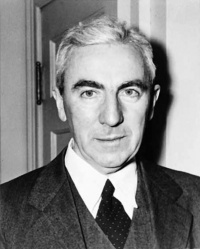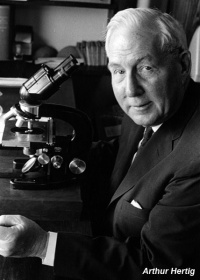Paper - The human conceptus during the first two weeks of gestation
| Embryology - 27 Apr 2024 |
|---|
| Google Translate - select your language from the list shown below (this will open a new external page) |
|
العربية | català | 中文 | 中國傳統的 | français | Deutsche | עִברִית | हिंदी | bahasa Indonesia | italiano | 日本語 | 한국어 | မြန်မာ | Pilipino | Polskie | português | ਪੰਜਾਬੀ ਦੇ | Română | русский | Español | Swahili | Svensk | ไทย | Türkçe | اردو | ייִדיש | Tiếng Việt These external translations are automated and may not be accurate. (More? About Translations) |
Rock J. and Hertig AT. The human conceptus during the first two weeks of gestation. (1948) Amer. J. Obstet. Gynecol, 55: 6-17. PMID 18918949
| Historic Disclaimer - information about historic embryology pages |
|---|
| Pages where the terms "Historic" (textbooks, papers, people, recommendations) appear on this site, and sections within pages where this disclaimer appears, indicate that the content and scientific understanding are specific to the time of publication. This means that while some scientific descriptions are still accurate, the terminology and interpretation of the developmental mechanisms reflect the understanding at the time of original publication and those of the preceding periods, these terms, interpretations and recommendations may not reflect our current scientific understanding. (More? Embryology History | Historic Embryology Papers) |
The Human Conceptus during the First Two Weeks of Gestation
John Rock and Arthur T . Hertig
Free Hospital for Women, Brookline, Mass., Departments of Pathology, Obstetrics and Gynecology, Harvard Medical School and Department of Embryology, Carnegie Institution of Washington.
Introduction
The youngest human embryo was conceived, not naturally in the Fallopian tube of its mother, but in a watch glass in the laboratory. It was the last of a series of almost 800 eggs. all recovered from ovarian tissue, of which 138 were exposed by Mrs. Miriam F. Menkin and me to human spermatozoa in about 1 c.c. of Ringer-Locke's Solution. After a pencil drawing was made of this two-cell individual, it was regrettably lost. A few days later , however, another egg similarly treated began its personal existence by changing from a single cell that had been part of the maternal tissue into a two-cell autonomous structure (Fig. 1, A.). Because none had been seen to do likewise without spermatozoa, and there were spermatozoa within the zona pellucida, it was probable that this two-cell organism is the result of conjugation of the male and female components. Some weeks later, similar procedures resulted in the production of two ova in the three-cell stage.
Cite this page: Hill, M.A. (2024, April 27) Embryology Paper - The human conceptus during the first two weeks of gestation. Retrieved from https://embryology.med.unsw.edu.au/embryology/index.php/Paper_-_The_human_conceptus_during_the_first_two_weeks_of_gestation
- © Dr Mark Hill 2024, UNSW Embryology ISBN: 978 0 7334 2609 4 - UNSW CRICOS Provider Code No. 00098G


